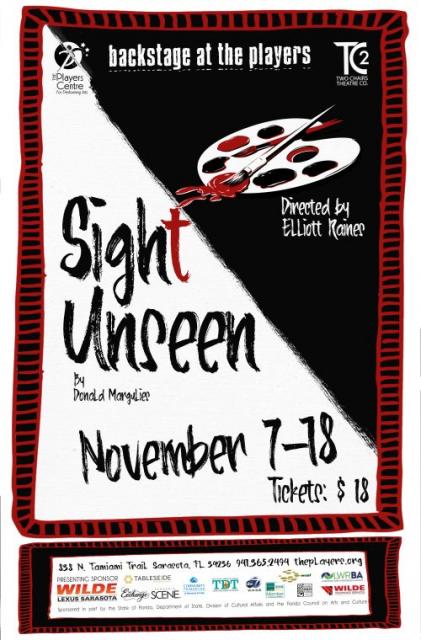
Sight Unseen proves to be about the importance of past to the present with changes brought about by family influences and time on personal relationships, art, historical viewpoints, jealousy, commercialism. The play time-travels among rural England and a London gallery in 1992 and about 17 and 15 years earlier in an art school studio and digs in New York City. Elliott Raines directs it mostly realistically as “a beautiful tale about the complexity and difficulty of relationships.” Versatile Dylan Jones plays ultra-successful painter Jonathan Waxman, the non-heroic hero who takes up again—this time, sans sexual implications—with Lauren Ward’s intelligent Patricia. He’s come for an overnight visit before a London retrospective of his art to the cold Northern England farmhouse Patricia lives in with husband Nick. An archeologist with whom Patricia works on ancient Roman excavations, Paul Hutchinson’s testy Nick is jealous of Jonathan and Patricia’s former relationship. She soon shows she hasn’t it left entirely behind. Jonathan peers into the parlor and sees (but the audience doesn’t) an early painting of Patricia, his gift to and inspired by her. He wants this seminal work in his showing. Nick depreciates it artistically but is awed by its probable monetary worth, since rich buyers are ordering Jonathan’s future paintings “sight unseen” and he’s asked for only a loan of Patricia’s portrait for the retrospective. In the gallery, Cindy Schlotterback’s sexy, provocatively dressed German journalist Grete interviews Jonathan about the meaning of his paintings. He ties them to his Jewishness, especially one in a graveyard sex scene that he insists stresses the Holocaust, greatest of horrors. Grete insists he reveal how he all along used commercial promotion of his art above historical and humane concerns. At the end of her interview (split into two scenes), he cries out in defense of his artistic purposes and their links to themes of obligation to his heritage. Two additional separated farmhouse scenes pursue themes of the meaning of art, the reasons Patricia and Nick married, how Jonathan obtained the portrait loan, and what the real relationship between him and Patricia had been and will be. The final scene, in NYC, shows their initial meeting and strongly affirms possibilities of sustained togetherness. Most affecting Jonathan and Patricia’s mutuality, though, are his two “sight unseen” parents. The lovers’ break-up occurred after the death of his mother, who was upset her son had moved in with a shiska. Her cruelty to Patricia lasted in her final sickness, and Jonathan picked up on it. With his loss, he found Patricia not able to substitute and quickly broke with her, hurting her as someone he no longer loved. The presence of Jonathan’s father, also “sight unseen,” always dominated his son. Though the father seemed to Patricia to really like her, in the same way he seemed to Jonathan not to love what he wanted to be as an artist. Author Margulies has written that the father’s death “jolts the protagonist...into examining his loss of cultural identity and artistic purpose.” Jonathan thus seeks out Patricia, whom he once loved and inspired him to seek what he’s not yet found. The actors—especially the past lovers—meet their roles’ challenges. Hutchinson’s English accent is not completely consistent, though, and Cindy Schlotterback’s German affected by a year’s study in America seems rather tight-lipped. Jones and Ward do sound like Americans, even if the latter is supposed to slip into an English accent at times. Their dress says as much as their speech. The set is serviceable, though early on a doorway to the room of the unseen-by-us painting isn’t necessary, so its absence later is bothersome. A simple projection of the name of the artist at his gallery retrospective suffices nicely. The colored lights on a side wall representing his paintings (thus also unseen-by-us) constitute a great idea well executed. Sound and props are both also appropriate. Elliott Raines’s direction seems to concentrate throughout on the two central characters’ mutual roles and what they might have been. He does not leave them “sight unseen” by the text’s triangle of lovers or by the audience.
